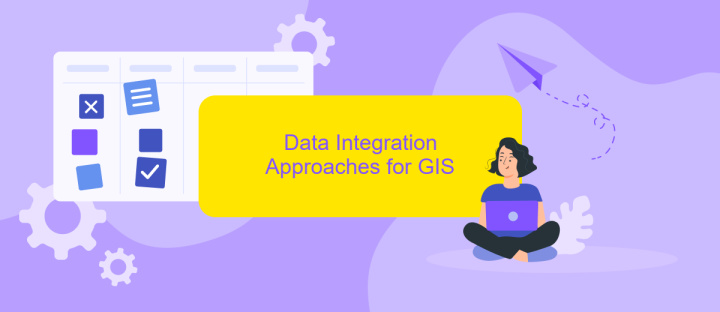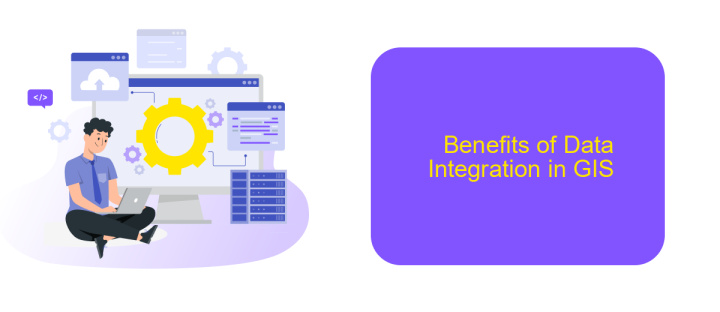Data Integration GIS
Data integration in Geographic Information Systems (GIS) is a critical process that combines data from various sources to provide a comprehensive view of spatial information. This integration enhances decision-making, improves accuracy, and facilitates the analysis of complex geographical patterns. By merging diverse datasets, GIS professionals can uncover insights that are essential for urban planning, environmental management, and numerous other applications.
Introduction
Data integration in Geographic Information Systems (GIS) is a critical process that combines data from various sources to provide a unified view of spatial information. This integration enhances the ability to analyze, visualize, and interpret geographic data, facilitating better decision-making in urban planning, environmental monitoring, and resource management.
- Streamlined data collection and management
- Enhanced data accuracy and consistency
- Improved analytical capabilities
- Seamless integration with other systems
- Cost and time efficiency
Various tools and services, such as ApiX-Drive, play a crucial role in simplifying the integration process. ApiX-Drive allows for easy connection between different data sources, automating data transfer and synchronization. This ensures that GIS platforms have access to the most current and accurate data, thereby improving the overall functionality and reliability of GIS applications.
Data Integration Challenges in GIS

Data integration in GIS presents numerous challenges, primarily due to the heterogeneity of data sources and formats. Different organizations often use varied data structures, projections, and standards, making it difficult to achieve seamless integration. Additionally, the sheer volume of geospatial data can strain existing systems and workflows, leading to inefficiencies and potential data loss. Ensuring data accuracy and consistency across multiple sources is another significant hurdle, as discrepancies can result in flawed analysis and decision-making.
Moreover, the integration process requires robust tools and platforms that can handle diverse data types and ensure smooth data flow. Services like ApiX-Drive can facilitate this by offering automated data transfer and synchronization between different GIS systems and applications. By leveraging such tools, organizations can streamline their data integration efforts, reduce manual intervention, and enhance overall data reliability. However, the initial setup and ongoing maintenance of these integrations can still be resource-intensive, necessitating skilled personnel and continuous monitoring to address any issues that arise.
Data Integration Approaches for GIS

Data integration in Geographic Information Systems (GIS) is essential for combining spatial data from various sources to create a comprehensive and accurate representation of geographic phenomena. There are several approaches to data integration in GIS, each with its own advantages and challenges.
- Manual Integration: This involves manually importing and aligning datasets from different sources. While this method offers high control, it is time-consuming and prone to human error.
- Automated Integration: Tools like ApiX-Drive facilitate seamless data integration by automating the process. ApiX-Drive connects various data sources and synchronizes them in real-time, reducing the risk of errors and saving time.
- Middleware Solutions: Middleware software acts as an intermediary, enabling different systems to communicate and share data. This approach is beneficial for integrating legacy systems with modern GIS platforms.
Choosing the right data integration approach for GIS depends on the specific requirements and constraints of the project. Automated solutions like ApiX-Drive are increasingly popular due to their efficiency and reliability, making them a valuable asset in the realm of GIS data integration.
Benefits of Data Integration in GIS

Data integration in GIS offers numerous advantages that significantly enhance the functionality and efficiency of geographic information systems. By combining data from various sources, GIS can provide a comprehensive view of spatial information, leading to better decision-making and analysis.
One of the key benefits of data integration in GIS is the ability to streamline workflows. Integrating diverse datasets allows for more efficient data management and reduces the time spent on data entry and processing. This can be particularly beneficial for organizations that rely heavily on accurate and up-to-date spatial data.
- Improved data accuracy and consistency
- Enhanced decision-making capabilities
- Streamlined workflows and processes
- Cost savings through reduced data redundancy
- Better collaboration and data sharing
Services like ApiX-Drive facilitate the integration of various data sources into GIS platforms, making it easier to automate data flows and maintain data integrity. By leveraging such tools, organizations can ensure that their GIS systems are always populated with the most current and relevant data, thereby maximizing the utility and impact of their spatial analyses.
Conclusions and Future Directions
The integration of Geographic Information Systems (GIS) with various data sources has demonstrated significant potential in enhancing spatial data analysis and decision-making processes. By leveraging advanced tools and services, such as ApiX-Drive, organizations can seamlessly connect disparate data sources, ensuring real-time data synchronization and improved data accuracy. This integration not only facilitates better resource management and planning but also supports more informed decision-making in sectors such as urban planning, environmental monitoring, and logistics.
Looking forward, the future of GIS data integration lies in the continuous development of more sophisticated integration platforms and the adoption of artificial intelligence and machine learning algorithms. These advancements will enable more efficient data processing, predictive analytics, and automated workflows. Additionally, the increasing availability of open data and the growth of IoT devices will further enrich GIS datasets, providing even more comprehensive and dynamic insights. As these technologies evolve, the role of services like ApiX-Drive will become increasingly crucial in simplifying and optimizing the integration process, paving the way for more innovative and impactful GIS applications.
FAQ
What is GIS data integration?
Why is GIS data integration important?
What are common challenges in GIS data integration?
How can automation improve GIS data integration?
What are the best practices for successful GIS data integration?
Apix-Drive is a simple and efficient system connector that will help you automate routine tasks and optimize business processes. You can save time and money, direct these resources to more important purposes. Test ApiX-Drive and make sure that this tool will relieve your employees and after 5 minutes of settings your business will start working faster.

